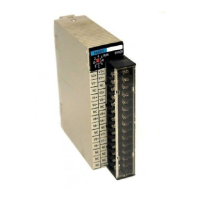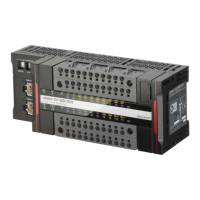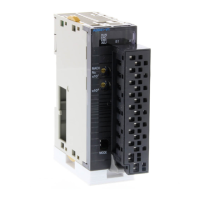110
Analog Input Units Section 5-4
The details of each byte are shown in the following table.
Note The one-shot time can be changed. For details, refer to the one-shot time set-
tings for the top/valley hold function.
Analog Status Flags
(Analog Status)
The Analog Status Flags include allocations for the Comparator Result Flag,
the Top/Valley Detection Timing Flags, and the Off-wire Detection Flags.
These flags are used for detection and monitoring.
The data format used for each byte when these flags are allocated in the Mas-
ter is shown below (2 bytes/1 word).
The details for each bit are shown in the following table.
Byte Abbreviation Name Details
+0 V_STx Valley Detection Tim-
ing Flag
Turns ON when a valley is
detected by the valley hold
function and then turns OFF
after the one-shot time has
elapsed.
+1 T_STx Top Detection Tim-
ing Flag
Turns ON when a top is
detected by the top hold func-
tion and then turns OFF after
the one-shot time has elapsed.
Bit 7 Bit 6 Bit 5 Bit 4 Bit 3 Bit 2 Bit 1 Bit 0
+0 BW0 T_ST0 V_ST0 HH0 H0 PS0 L0 LL0 Input
0
+1 BW1 T_ST1 V_ST1 HH1 H1 PS1 L1 LL1 Input
1
Bit Abbrevi-
ation
Name Details
0 LLx Compara-
tor result
Low Low Limit
Alarm Flag
Turns ON when the value of
data allocated in Analog Data
drops below the Low Low Limit
alarm setting.
1 Lx Low Limit Alarm
Flag
Turns ON when the value of
data allocated in Analog Data
drops below the Low Limit
alarm setting.
2 PSx Normal Flag
(pass signal)
Turns ON when none of the
alarms (High High Limit, High
Limit, Low Low Limit, and Low
Limit) have been output.
3 Hx High Limit
Alarm Flag
Turns ON when the value of
data allocated in Analog Data
exceeds the High Limit alarm
setting.
4 HHx High High Limit
Alarm Flag
Turns ON when the value of
data allocated in Analog Data
exceeds the High High Limit
alarm setting.

